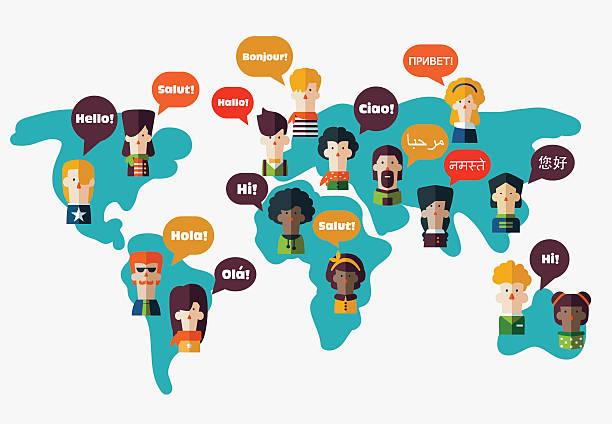SELF-HELP-
Making the Most of Our Cognitive and Social Limitations.
What our shortcomings tell us about ourselves.
Reviewed by Vanessa Lancaster
KEY POINTS-
After studying our limitations, we often discover that the ways we compensate for these limitations constitute strengths in themselves.
Some limitations can be confronted directly, opening new opportunities and providing a new sense of mastery.
Understanding our limitations allows us to know ourselves better, while removing unnecessary barriers to a more fulfilling life.
Many of us are aware of our physical and artistic limitations, and we're able to acknowledge them and even make light of them. We readily admit that we will never play professional basketball or achieve greatness as sculptors or singers.
But how well do we know our cognitive and social limitations? We notice some of them because we can compare what we manage with difficulty to what others accomplish with ease and grace. There are also tests that measure specific cognitive and interpersonal abilities. But in general, we are more aware of limitations of the body than limitations of the mind.
Identifying cognitive and social limitations requires introspection, self-evaluation, and resolve. It means focusing on what we consistently have difficulty doing.
When asked to evaluate ourselves, we mostly list positive qualities–not because we’re boastful, but because we’re shaped into that favorable response by such influences as college applications, career counseling, job interviews, and online dating platforms. Our elevator pitch doesn’t emphasize the negative.
How Shortcomings Motivate Us
Alfred Adler, a psychotherapist and contemporary of Freud, said that the motivation to compensate for our shortcomings begins in childhood when we are physically and cognitively less skilled than the older people in our lives. As children, we mature out of being smaller, weaker, and less knowledgeable, but the motivation to overcome or compensate for our limitations stays with us for the rest of our lives.
Defining Our Abilities and Inabilities
Our natural limitations are probably subsets of Gardner’s nine categories of multiple intelligence: linguistic, logical-mathematical, spatial, bodily-kinesthetic, musical, intrapersonal (knowing one’s self), interpersonal (knowing others), naturalistic, and existential.
We may have shortcomings in verbal fluency or math or finding our way around or holding a tune, or taking the perspective of others.
Working With Our Limitations
Confronting
Some limitations can be confronted directly. Early in his career, the noted psychotherapist, Albert Ellis, shed his awkwardness with public speaking by signing up to speak in public twice a week. By doing so, he learned to improve his verbal fluency while overcoming his fear.
Tom Dempsey was born without toes on his right foot, but with strong motivation and a special shoe, he became a placekicker in the NFL. For 43 years, he held the record for the longest field goal ever kicked in the NFL.
Other limitations can be placed in perspective and managed. I had a friend in college who stuttered.1 He worked on reducing his stuttering but also accepted it as a fact of his current life and did not allow it to limit him. He was a DJ on his own radio show and ran for student body president, with one of his slogans being, “No More Fast-Talking Politics.”
Compensating
We usually learn to live with our cognitive and social limitations by compensating.
One of my weaknesses, for example, is finding my way around. GPS has largely removed that problem, but before that, I pored over maps of unfamiliar places prior to visiting these places, committing the major roads to memory and making notes on specific choice points. (GPS still doesn’t help me navigate an unfamiliar building with multiple hallways.) Another of my weaknesses is translating verbal instructions into physical movements, such as dance moves. I compensate by practicing with YouTube videos before going public.
Avoiding
We can also try to avoid difficult activities. But, avoidance leaves us unprepared when called upon to engage in the very activity we’ve been avoiding, and it also hides associated abilities we do have.
An Exercise to Increase Awareness of Our Limitations
In my class on the Self, I ask students to describe an activity they have consistent difficulty with–something they’ve been dealing with most of their lives.
They focus on the activity itself, their difficulties with this activity, their strategies for compensating, and the possible sources of the difficulties. For many of them, this is the most focused thinking they’ve ever done about this specific limitation.
With every class, students present a diverse set of limitations: awkwardness talking to people they don’t know, problems with math, not feeling emotionally supportive with friends, an inability to spell, setbacks with standardized tests, clumsiness in flirting or small talk, a poor sense of direction, a lack of singing ability.
Personal Benefits
Many students discover that how they compensate for their limitations constitutes strengths in themselves. If they get others to help, they learn that graceful persuasion is a strength. If they memorize phrases to manage interpersonal awkwardness, they value their resourcefulness.
Some students discover that what they thought was a limitation is actually an activity they can do, but one that creates anxiety. They then work on ways to reduce their anxiety.
Other students learn that describing a limitation in detail circumscribes the problem. Someone with difficulty expressing himself said he realized the difficulty was not with good friends and family–or with strangers, but with acquaintances in between. Focusing specifically on our limitations can limit the limitations.
Sometimes, directly confronting a limitation vanquishes it while also opening opportunities.
One student joined the debate team to provide a structured setting for overcoming her unease with disagreement. She then became an accomplished collegiate debater, which brought about a feeling of mastery and new friendships and travel opportunities.
Professional Benefits
Most of us choose careers that draw on our strengths. But, sometimes, professional interests can overlap with natural limitations: actors who can’t remember lines, dental students unable to work in the mirror image world, and people devoted to helping animals but lacking the mathematical talent for veterinary medicine.
When professional aspirations overlap with persistent limitations, this assignment can encourage people to seek specific training in their area of difficulty or to consider shifting their academic studies to a related area that allows professional satisfaction without implacable struggle.
Continuing Efforts
If we choose, we can develop a comprehensive program for managing more pervasive limitations we want to compensate for.
One resonant example is David Finch’s collection of advice to himself for overcoming anti-social behaviors with his wife due to Asperger’s syndrome. He focused on specific matters (Don’t change the radio station when she’s singing along), more general rules (Apologies don’t count when you shout them), and larger advice (Be her friend, first and always).
His journal of best practices continues to guide him as a husband and father in ways large, small, and in between.
Thriving With Our Limitations
Literature provides countless examples of lives dramatically short-circuited by personal limitations: Othello's jealousy, Jon Snow's stubbornness, and Veruca Salt's selfishness. If these characters had identified their limitations and focused on how to compensate, they would have lived less troubled and more fulfilled fictional lives. Ebenezer Scrooge eventually managed to overcome his greed and miserliness, and he was happier for it.
Closely examining our limitations allows us to know ourselves better while removing unnecessary barriers to a more fulfilling life. More broadly, it encourages humility and can ultimately bestow wisdom.
SELF-HELP-
Making the Most of Our Cognitive and Social Limitations.
What our shortcomings tell us about ourselves.
Reviewed by Vanessa Lancaster
KEY POINTS-
After studying our limitations, we often discover that the ways we compensate for these limitations constitute strengths in themselves.
Some limitations can be confronted directly, opening new opportunities and providing a new sense of mastery.
Understanding our limitations allows us to know ourselves better, while removing unnecessary barriers to a more fulfilling life.
Many of us are aware of our physical and artistic limitations, and we're able to acknowledge them and even make light of them. We readily admit that we will never play professional basketball or achieve greatness as sculptors or singers.
But how well do we know our cognitive and social limitations? We notice some of them because we can compare what we manage with difficulty to what others accomplish with ease and grace. There are also tests that measure specific cognitive and interpersonal abilities. But in general, we are more aware of limitations of the body than limitations of the mind.
Identifying cognitive and social limitations requires introspection, self-evaluation, and resolve. It means focusing on what we consistently have difficulty doing.
When asked to evaluate ourselves, we mostly list positive qualities–not because we’re boastful, but because we’re shaped into that favorable response by such influences as college applications, career counseling, job interviews, and online dating platforms. Our elevator pitch doesn’t emphasize the negative.
How Shortcomings Motivate Us
Alfred Adler, a psychotherapist and contemporary of Freud, said that the motivation to compensate for our shortcomings begins in childhood when we are physically and cognitively less skilled than the older people in our lives. As children, we mature out of being smaller, weaker, and less knowledgeable, but the motivation to overcome or compensate for our limitations stays with us for the rest of our lives.
Defining Our Abilities and Inabilities
Our natural limitations are probably subsets of Gardner’s nine categories of multiple intelligence: linguistic, logical-mathematical, spatial, bodily-kinesthetic, musical, intrapersonal (knowing one’s self), interpersonal (knowing others), naturalistic, and existential.
We may have shortcomings in verbal fluency or math or finding our way around or holding a tune, or taking the perspective of others.
Working With Our Limitations
Confronting
Some limitations can be confronted directly. Early in his career, the noted psychotherapist, Albert Ellis, shed his awkwardness with public speaking by signing up to speak in public twice a week. By doing so, he learned to improve his verbal fluency while overcoming his fear.
Tom Dempsey was born without toes on his right foot, but with strong motivation and a special shoe, he became a placekicker in the NFL. For 43 years, he held the record for the longest field goal ever kicked in the NFL.
Other limitations can be placed in perspective and managed. I had a friend in college who stuttered.1 He worked on reducing his stuttering but also accepted it as a fact of his current life and did not allow it to limit him. He was a DJ on his own radio show and ran for student body president, with one of his slogans being, “No More Fast-Talking Politics.”
Compensating
We usually learn to live with our cognitive and social limitations by compensating.
One of my weaknesses, for example, is finding my way around. GPS has largely removed that problem, but before that, I pored over maps of unfamiliar places prior to visiting these places, committing the major roads to memory and making notes on specific choice points. (GPS still doesn’t help me navigate an unfamiliar building with multiple hallways.) Another of my weaknesses is translating verbal instructions into physical movements, such as dance moves. I compensate by practicing with YouTube videos before going public.
Avoiding
We can also try to avoid difficult activities. But, avoidance leaves us unprepared when called upon to engage in the very activity we’ve been avoiding, and it also hides associated abilities we do have.
An Exercise to Increase Awareness of Our Limitations
In my class on the Self, I ask students to describe an activity they have consistent difficulty with–something they’ve been dealing with most of their lives.
They focus on the activity itself, their difficulties with this activity, their strategies for compensating, and the possible sources of the difficulties. For many of them, this is the most focused thinking they’ve ever done about this specific limitation.
With every class, students present a diverse set of limitations: awkwardness talking to people they don’t know, problems with math, not feeling emotionally supportive with friends, an inability to spell, setbacks with standardized tests, clumsiness in flirting or small talk, a poor sense of direction, a lack of singing ability.
Personal Benefits
Many students discover that how they compensate for their limitations constitutes strengths in themselves. If they get others to help, they learn that graceful persuasion is a strength. If they memorize phrases to manage interpersonal awkwardness, they value their resourcefulness.
Some students discover that what they thought was a limitation is actually an activity they can do, but one that creates anxiety. They then work on ways to reduce their anxiety.
Other students learn that describing a limitation in detail circumscribes the problem. Someone with difficulty expressing himself said he realized the difficulty was not with good friends and family–or with strangers, but with acquaintances in between. Focusing specifically on our limitations can limit the limitations.
Sometimes, directly confronting a limitation vanquishes it while also opening opportunities.
One student joined the debate team to provide a structured setting for overcoming her unease with disagreement. She then became an accomplished collegiate debater, which brought about a feeling of mastery and new friendships and travel opportunities.
Professional Benefits
Most of us choose careers that draw on our strengths. But, sometimes, professional interests can overlap with natural limitations: actors who can’t remember lines, dental students unable to work in the mirror image world, and people devoted to helping animals but lacking the mathematical talent for veterinary medicine.
When professional aspirations overlap with persistent limitations, this assignment can encourage people to seek specific training in their area of difficulty or to consider shifting their academic studies to a related area that allows professional satisfaction without implacable struggle.
Continuing Efforts
If we choose, we can develop a comprehensive program for managing more pervasive limitations we want to compensate for.
One resonant example is David Finch’s collection of advice to himself for overcoming anti-social behaviors with his wife due to Asperger’s syndrome. He focused on specific matters (Don’t change the radio station when she’s singing along), more general rules (Apologies don’t count when you shout them), and larger advice (Be her friend, first and always).
His journal of best practices continues to guide him as a husband and father in ways large, small, and in between.
Thriving With Our Limitations
Literature provides countless examples of lives dramatically short-circuited by personal limitations: Othello's jealousy, Jon Snow's stubbornness, and Veruca Salt's selfishness. If these characters had identified their limitations and focused on how to compensate, they would have lived less troubled and more fulfilled fictional lives. Ebenezer Scrooge eventually managed to overcome his greed and miserliness, and he was happier for it.
Closely examining our limitations allows us to know ourselves better while removing unnecessary barriers to a more fulfilling life. More broadly, it encourages humility and can ultimately bestow wisdom.










